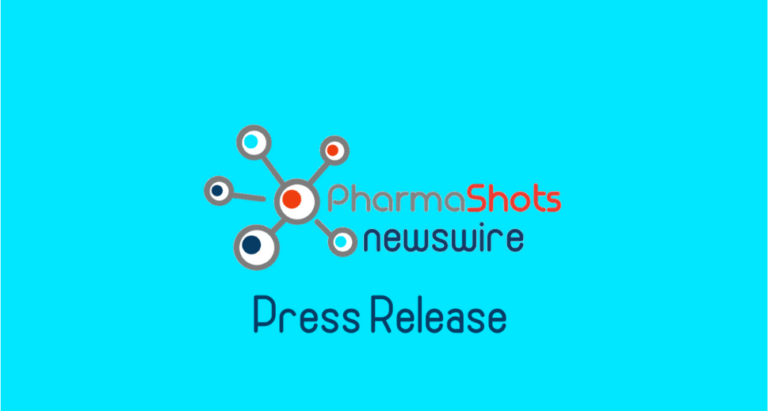New Data Demonstrate Long-Term Benefit of IMBRUVICA? (ibrutinib) as First-Line Treatment for High-Risk Chronic Lymphocytic Leukaemia
 BEERSE, Belgium--(BUSINESS WIRE)--The Janssen Pharmaceutical Companies of Johnson & Johnson announced today results from pooled analyses of long-term follow-up from multiple clinical trials evaluating the use of IMBRUVICA??(ibrutinib) monotherapy and in combination as first-line treatment for patients with chronic lymphocytic leukaemia (CLL) with high-risk features. The data were presented at the 2020 American Society of Hematology (ASH) Annual Meeting. Results from an integrated analysis of two clinical trials with up to 79 months of follow-up (Abstract #2220)1?demonstrated similar progression-free survival (PFS) and overall response rates (ORR) with ibrutinib in patients with or without high-risk genomic features, and further showed significant PFS and ORR benefits with ibrutinib compared with chlorambucil-based therapy regardless of genomic risk features.1
BEERSE, Belgium--(BUSINESS WIRE)--The Janssen Pharmaceutical Companies of Johnson & Johnson announced today results from pooled analyses of long-term follow-up from multiple clinical trials evaluating the use of IMBRUVICA??(ibrutinib) monotherapy and in combination as first-line treatment for patients with chronic lymphocytic leukaemia (CLL) with high-risk features. The data were presented at the 2020 American Society of Hematology (ASH) Annual Meeting. Results from an integrated analysis of two clinical trials with up to 79 months of follow-up (Abstract #2220)1?demonstrated similar progression-free survival (PFS) and overall response rates (ORR) with ibrutinib in patients with or without high-risk genomic features, and further showed significant PFS and ORR benefits with ibrutinib compared with chlorambucil-based therapy regardless of genomic risk features.1
In addition, data with a median follow-up of more than four years were presented from a pooled analysis of 89 patients with high-risk CLL bearing TP53 aberrations from four clinical trials showing that first-line treatment with ibrutinib resulted in sustained efficacy, including PFS, suggesting that ibrutinib has meaningfully improved the poor prognosis in this high-risk population (Abstract #2219).2
?These large integrated data sets with follow-up up to six years, in addition to other data presented at the meeting in similar populations, contribute to the accumulating evidence supporting the clinically meaningful, long-term treatment benefit of ibrutinib as first-line therapy for patients with CLL,? said Craig Tendler, M.D., Vice President, Late Development and Global Medical Affairs, Oncology, Janssen Research & Development, LLC. ?Ibrutinib is an approved standard of care in first-line treatment of CLL, and the data presented at the ASH Annual Meeting further demonstrate the durability of responses in CLL patients with traditional high-risk features.?
Two additional studies will be presented in the oral sessions showing real-world treatment patterns or outcomes in patients with CLL treated outside of a clinical trial setting. The first study is a U.S. retrospective analysis describing treatment patterns and time to next treatment (TTNT) in patients with high-risk CLL treated with first-line ibrutinib or chemoimmunotherapy (CIT) (Abstract #372).3?In this U.S. retrospective study, the largest of its kind to date, patients with high-risk CLL treated with single-agent ibrutinib had significantly longer TTNT compared with patients treated with first-line CIT.3?In the second oral presentation, results from the U.S. informCLL? registry (Abstract #547) highlighted infrequent prognostic biomarker testing rates prior to initiating CLL therapy, and limited use of such information to guide optimal treatment selection for many patients with high-risk CLL, suggesting an opportunity for additional education of healthcare providers.4
Integrated Analysis of the Phase 3 RESONATE-2 and iLLUMINATE Trials Evaluated Outcomes of First-Line Ibrutinib in Patients with CLL and High-Risk Genomic Features with up to 6.5 Years Follow-up (Abstract #2220)1
Data were presented from a pooled analysis of two Phase 3 studies (RESONATE-2 and iLLUMINATE) with up to 79 months of follow-up evaluating ibrutinib-based therapy in first-line treatment of CLL patients with various high-risk genomic features.1
Key Study Findings:
- In patients treated with ibrutinib-based therapy, PFS was comparable between patients with, versus without, specified high-risk genomic features, including del(17p)/TP53 mutated/BIRC3 mutated, the highest risk category.1
- At 42 months, PFS rates were significantly higher across all high-risk genomic subgroups in previously untreated patients treated with ibrutinib-based treatment (63 to 82 percent) compared with those receiving chlorambucil-based treatment (6 to 34 percent) with or without obinutuzumab, regardless of mutation.1
- At a median duration of ibrutinib?treatment of 35.7-43.8 months across high-risk subgroups, there were no meaningful differences in the rates of treatment-emergent adverse events (AEs) of any Grade, or Grade 3 or greater AEs compared to those of the overall population.1
- With a median follow-up of 50 months, median PFS was not reached (95% CI: 67 months to not estimable).2?At 48 months, the PFS rate was 79 percent and the OS rate was 88 percent among high-risk patients treated with ibrutinib monotherapy.2
- Additionally, 46 percent of patients with TP53 aberrations remained on ibrutinib treatment and 39 percent had a complete response.2
- No new safety signals were identified in this analysis and in general the rates of Grade =3 AEs of clinical interest declined after the first year of ibrutinib treatment.2
- Data presented showed that high-risk patients receiving ibrutinib significantly prolonged TTNT compared to those receiving CIT.3
- Ibrutinib also provided sustained clinical benefit regardless of risk status, which is consistent with clinical trial results.5,6,7
- This study highlighted the need for cytogenetic/molecular testing before CIT treatment, consistent with clinical treatment guidelines.8,9
- The most common index treatment was ibrutinib; the majority of patients treated with ibrutinib remained on therapy at two-year follow-up; and CIT was also used for one-third of patients.4
- Data also demonstrated that prognostic biomarker testing rates were poor, especially for the biomarkers TP53 and IGHV.4
- Data from informCLL? also indicate a ?knowledge gap? in terms of prognostic marker testing, interpretation and selection of optimal therapies for patients with high-risk disease.4
#ENDS#
About Ibrutinib Ibrutinib is a once-daily, first-in-class Bruton's tyrosine kinase (BTK) inhibitor that is administered orally, and is jointly developed and commercialised by Janssen Biotech, Inc. and Pharmacyclics LLC, an AbbVie company.10?Ibrutinib blocks the BTK protein; the BTK protein sends important signals that tell B cells to mature and produce antibodies. BTK signalling is needed by specific cancer cells to multiply and spread.11?By blocking BTK, ibrutinib may help move abnormal B cells out of their nourishing environments in the lymph nodes, bone marrow, and other organs.12 Indications for which ibrutinib is approved in Europe include:10- Chronic lymphocytic leukaemia (CLL): As a single agent or in combination with rituximab or obinutuzumab for the treatment of adult patients with previously untreated CLL, and as a single agent or in combination with bendamustine and rituximab (BR) for the treatment of adult patients with CLL who have received at least one prior therapy
- Mantle cell lymphoma (MCL): As a single agent for the treatment of adult patients with relapsed or refractory MCL
- Waldenstr?m?s macroglobulinemia (WM): As a single agent for the treatment of adult patients who have received at least one prior therapy or in first-line treatment for patients unsuitable for chemo-immunotherapy, and in combination with rituximab for the treatment of adult patients





